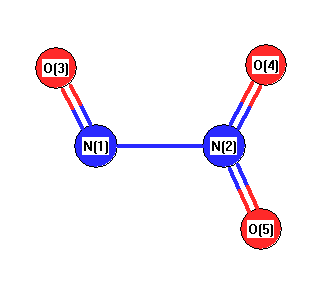.
| squib |
reference |
DOI |
| 1974Hel/Hel(II/6) |
Hellwege, KH and AM Hellwege (eds.). Landolt-Bornstein: Group II: Volume 6 Molecular Constants from Microwave, Molecular Beam, and Electron Spin Resonance Spectroscopy Springer-Verlag. Berlin. 1974. |
10.1007/b19951 |
| 1979HUB/HER |
Huber, K.P.; Herzberg, G., Molecular Spectra and Molecular Structure. IV. Constants of Diatomic Molecules, Van Nostrand Reinhold Co., 1979 |
10.1007/978-1-4757-0961-2 |
| 1988Che/Smi:843 |
Chewter, L.; Smith, I.; Yarwood, G. "A high resolution FTIR spectroscopid study of the n(nu)1 (n = 1-4) bands of N2O3." Molecular Physics. 63, 843-864 (1988) |
10.1080/00268978800100601 |
| 1994sti/pap:2910 |
Andras Stirling, Imre Papai, Janos Mink "Density functional study of nitorgen oxides" J. Chem. Phys. 100(4), 2910, 1994 |
10.1063/1.466433 |
| Gurvich |
Gurvich, L.V.; Veyts, I. V.; Alcock, C. B., Thermodynamic Properties of Individual Substances, Fouth Edition, Hemisphere Pub. Co., New York, 1989 |
|











